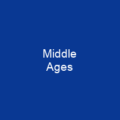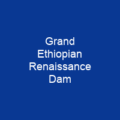The Renaissance: A Time of Transformation and Discovery
Imagine a period where the world was reborn, where old ideas were challenged, and new ones flourished. The Renaissance, spanning from the 15th to the 16th centuries, marked a pivotal transition from the Middle Ages to modernity. This era, characterized by an intense revival of classical Greek and Roman culture, transformed every aspect of society—from art and architecture to politics and religion.
The Birth of Humanism
At its core, the Renaissance was founded on humanism, a philosophy that emphasized the value and potential of human beings. This movement derived from the rediscovery of classical Greek texts and sought to understand the world through reason and empirical evidence. Thinkers like Niccolò Machiavelli and Giovanni Pico della Mirandola championed this approach, advocating for a new understanding of human dignity and intellectual freedom.
Artistic Innovations
In art, the Renaissance saw groundbreaking developments such as linear perspective, which transformed paintings into realistic depictions of space. Artists like Leonardo da Vinci and Michelangelo pushed boundaries with their intricate anatomical studies and masterful compositions. Their works not only showcased technical skill but also a deep appreciation for human emotion and beauty.
Scientific Advancements
The Renaissance was also a time of significant scientific progress. Figures such as Galileo Galilei, Tycho Brahe, and Johannes Kepler challenged traditional views with new discoveries in astronomy and physics. The invention of the printing press by Johannes Gutenberg democratized knowledge, allowing ideas to spread rapidly across Europe.
Exploration and Discovery
The period was marked by a spirit of exploration, driven by the desire to uncover new lands and understand the world better. Explorers like Christopher Columbus and Vasco da Gama set sail, leading to the discovery of the New World and reshaping global trade routes.
Regional Variations
The Renaissance did not occur uniformly across Europe; it had distinct characteristics in different regions. The Italian Renaissance, centered in Florence, was particularly influential, with cities like Venice, Genoa, and Milan contributing to its cultural richness. In France, the term ‘Renaissance’ comes from the French language and refers to a rebirth of culture brought by King Charles VIII after his conquests in Italy.
Impact on Society
The Renaissance had profound effects on society. It challenged traditional religious views, leading to the Protestant Reformation and Counter-Reformation. The period also saw significant economic changes, with the rise of merchant republics and the spread of humanist education among the middle class.
Conclusion: A Time of Transformation
The Renaissance was a complex and multifaceted era that transformed Europe in ways both profound and controversial. It marked a shift from medieval to modern thought, challenging old ideas while laying the groundwork for future advancements. Whether seen as an age of progress or decline, the Renaissance remains a pivotal period in human history, a time when the world was reborn through art, science, and exploration.

You want to know more about Renaissance?
This page is based on the article Renaissance published in Wikipedia (retrieved on December 3, 2024) and was automatically summarized using artificial intelligence.







